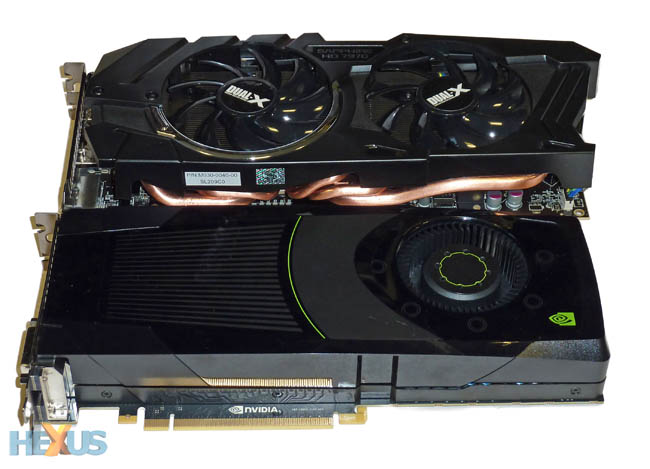A level playing field?
28nm process and heady speeds
The tech flavour for the month of March is very much with graphics cards. Spicing up the second half of the month is the NVIDIA GeForce GTX 680 GPU, now readily available for some £410.
Our architecture analysis of said card made more than a passing mention of how NVIDIA has constructed 'Kepler' with AMD's nascent design thinking in mind. GTX 680 shoves a significant number of compute cores, clocked in at the same speed as the general GPU, into a chip that harnesses the benefits of the latest 28nm production process. AMD's Radeon HD 7970, too, adopts such an approach.
A 28nm process has benefits other than reducing die size and manufacturing cost. Less voltage is required to switch the mass of transistors and, simplifying hugely by ignoring yields, higher frequencies can be achieved when compared to older, larger processes where the across-the-chip voltage needs to be higher. Referring specifically to graphics, boosting clocks is also made a little easier if the main constituent parts of the GPU are clocked in at the same speed, a la GTX 680.
We know that the GeForce GTX 680 is a faster card than the price-equivalent Radeon HD 7970, beating it by around 20 per cent at a 1,920x1,080 resolution and just over 10 per cent at 2,560x1,600. AMD manages to claw back some performance at the highest setting as its wider memory bus and higher bandwidth begin to tell.
Comparing reference cards shows us that NVIDIA's GPU is clocked in at 1,006MHz core and 6,008MHz memory, though the core figure boosts to, on average, 1,058MHz through some silicon trickery. This average has been calculated by NVIDIA when running a myriad of games across different resolutions and ambient conditions. However, this average is just that - your actual in-game results will vary, depending upon gaming title, GPU temperature and power use. We put NVIDIA's assertion to the test and monitored the GPU frequency when running our six games on a per-second logging basis. We came out with an average GPU Boost of 1062MHz, so close enough to NVIDIA's number.

AMD's Radeon HD 7970 card, meanwhile, arrives with a 925MHz core and 5,500MHz memory rating, yet partners have been able to increase those frequencies markedly via custom-cooled models.
What happens at the same frequencies?
This preamble paves the way for an interesting debate: which GPU is faster if both are set to the same clocks? Every GeForce GTX 680 is guaranteed to run at, on average, 1,058/6,008MHz, and any quality HD 7970 can operate at these higher-than-default clocks without having to fiddle with voltages. Sure, such a comparison is skewed in favour of AMD; NVIDIA's card doesn't need to be overclocked, but such an examination will show us whose architecture is the more potent once frequency advantage is stripped out.
We tried three aftermarket Radeon HD 7970 cards and all managed the required frequency without any voltage bump: nice. For no other reason than it was the last card in the system, we chose to run with the Sapphire HD 7970 OC Dual-X.
What have we got, then?
Two of the best graphics card from NVIDIA and AMD - both based on a cutting-edge 28nm manufacturing process - run at the GPU Boost speeds of the GeForce GTX 680. Can AMD close the gap?









